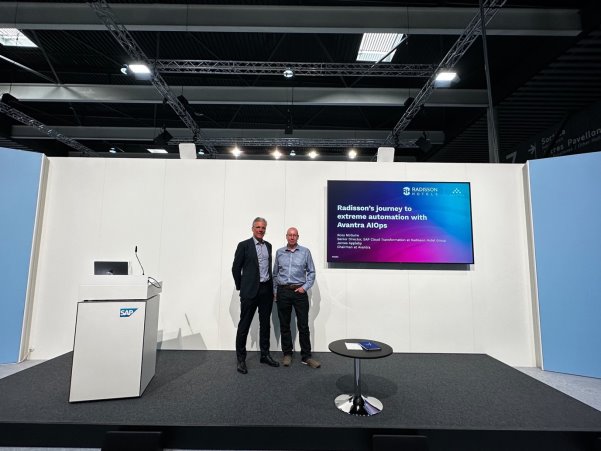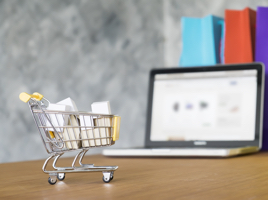ERP adoption has become a common trend now, and so it’s time for forward-thinking organizations to consider amalgamating IoT and ERP for opening up new doors of possibilities for operational excellence, workflow automation, and customer service.
With unprecedented, explosive levels of growth in the data generated globally, handling and managing workflow execution manually is nearly impossible for companies in today’s digitally-driven world. Since going digital is more of a necessity than an option, the only thing organizations can do is look out for solutions that would make their job easier. The need of the hour here is to have a unified solution that integrates all the business operations in one platform, allowing employees to have complete control over every resource of their organization. What’s more important, the solution should have additional functionality to report operational changes immediately so that employees can manage resources accordingly. And the requirement is being fulfilled by the technology-powered, sophisticated tool, Enterprise Resource Planning (ERP). As the name implies, the tool allows enterprises to plan and manage their resources, namely people, material, money, and so on, seamlessly. 81% of organizations are in the process of adopting or have already adopted ERP for resource management, according to Panorama Consulting Solutions Research Report. That means a majority of enterprises are adopting ERP solution. And if your enterprise is one of them, then what sets you apart from your competitors? Obviously, adopting an ERP solution will drive business excellence, achieve productivity goals, and also achieve a good ROI, but it won’t help you gain a competitive advantage. The best way to stand out from the crowd is for organizations is to adopt the most advanced version of ERP systems with augmented functionalities of new-age technologies like IoT. By combining IoT and ERP, enterprises can not only differentiate their business from competitors but also fuel new revenue growth.
Tracing the Evolution of ERP Systems
If you think that an ERP system is a recent innovation, then you are highly mistaken. The history of ERP systems goes back to the 1940s with the advent of calculating machines. Later in the 1960s, when the need for computing devices increased, new solutions were introduced, which included the required functionalities. The 1960s also saw the birth of MRP (Material Requirements Planning) solutions, that integrated EOQ (Economic Order Quantity) concepts with huge mainframe computers, that helped in procuring the necessary raw materials for producing, buying, and delivering products. In the 1980s, MRP solutions evolved to a more sophisticated level and were able to manage additional processes.
Later in the 1990s, the term ‘ERP’ was introduced, which referred to systems capable of offering capabilities to various business areas beyond just manufacturing (like in MRP). Established as an on-premise model, the ERP solution was capable of integrating, streamlining, and optimizing enterprise processes, such as production, sales, HR services, and other similar business functions. Finally, in the year 2000, ERP evolved to provide real-time capabilities to businesses with cloud-based services. Today, ERP technology has advanced to levels never imagined before. With the potential to seamlessly tie all the business applications together into a consolidated platform, the new-generation ERP system improves data visibility, control, and resource management.
Combining IoT and ERP for Better Opportunities
Having known the history of ERP solution, it’s now time to understand the link between IoT and ERP, and also IoT’s impact on the ERP systems. We already know that IoT opens up new opportunities for organizations to collect data. With sensors and cameras embedded in products, companies get detailed information on product status, right from the production, transportation, all the way until it reaches the customer’s hands. Now that’s where the link is – data. Data connects both IoT and ERP. To know how, let’s dive deeper.
Quantity and Quality Data
While every organization is striving to ensure successful digital transformation, the real winning recipe depends on the quality and quantity of the data collected by them. The more relevant the data they gather, more are chances of them gaining actionable insights for business expansion strategies. By integrating IoT and ERP, companies can improve data availability, which can lead to operational excellence. The data accumulated due to IoT sensors will be directly fed to the ERP software. Any changes in the process are reported in real-time. For example, sensors integrated into machines in a construction site will send real-time information on the working condition of the equipment. If the IoT data is linked to the ERP system, the occurrence of any problems pertaining to equipment health will be directly reflected in the application. This vital information will reach all the concerned workers on the spot via the ERP platform, which will help them take immediate action as required. We have mentioned just one of many examples here. The possibilities of integrating IoT and ERP will change for different departments, depending on the work they perform.
Improved Interaction
Generally, from the time a product is manufactured until the time it reaches the customers, many people are involved. The manufacturers are expected to keep record of every product that is being sold to customers. On occasions when manufacturers directly contact customers, keeping track of product sale becomes easy. But when dealers and vendors come into the picture, a lot of confusion might occur for getting clarity on the sale and end-user satisfaction details. With IoT coming into the picture, all information will be automatically updated in the ERP system in real-time, helping every stakeholder to stay on the same page. The ERP system will automatically operationalize the continuous influx of IoT data, thereby strengthening the communication between everyone.
Business Intelligence
ERP, when armed with IoT data, will help organizations to gain vital business-related insights instantaneously. The continuous stream of data enables enterprises to carry out real-time analysis, which will help them gain actionable insights to make tactical and quick decisions that will increase the revenue generation significantly. Besides, with IoT, organizations can consider integrating ERP systems with AI and ML so that employees get smart suggestions to make optimal decisions.
ERP solutions promise to cut down an organization’s pressure to maintain the complex business operations, allow team collaboration, and deliver real-time actionable insights for making the best possible decisions. With every core business function assimilated in one platform, companies can eliminate paperwork and records management, become more efficient and productive at work, and also automate time-consuming tasks. The standard ERP system, already capable of doing so much, is now empowered with new-age technologies like IoT and AI to function smartly and intelligently. While ERP helps companies to add efficiency and accuracy across every department, sophisticated technologies like IoT and AI when combined with ERP allow enterprises to strategize for business growth and success, benchmark against competitors, and also achieve their set goals.




